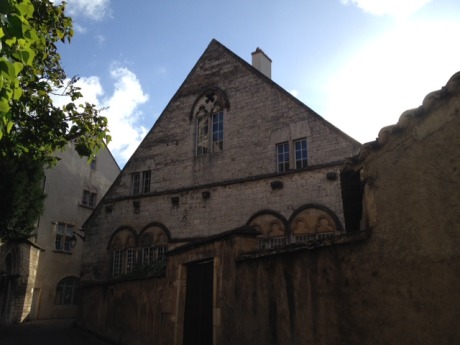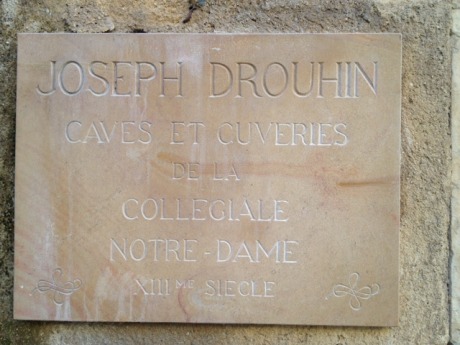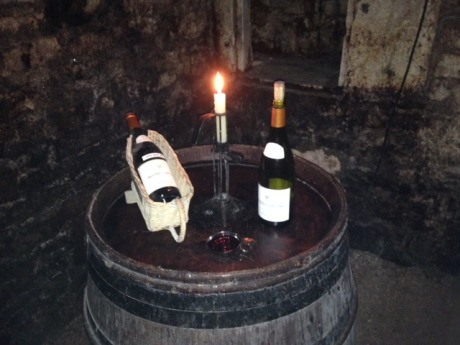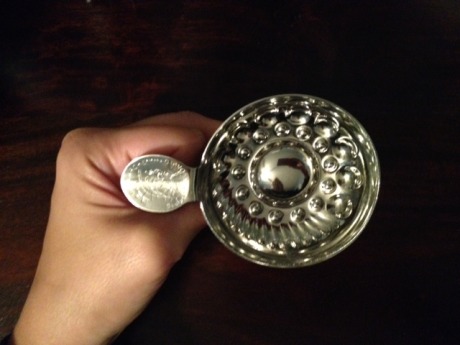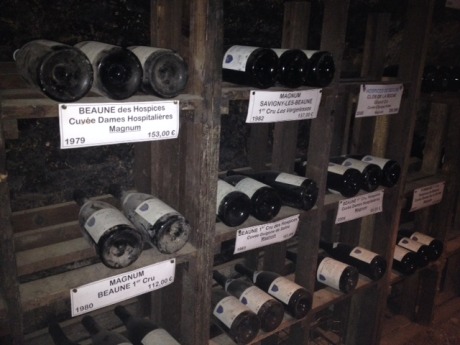Travels in Burgundy: Joseph Drouhin and Patriarche
After getting my bearings in Burgundy by visiting the Hôtel Dieu and Musée Du Vin de Bourgogne, I was ready to taste some wine and tour a few of the historic cellars of the region. First up: Maison Joseph Drouhin and Patriarche.
Tasting and Tour of Joseph Drouhin
I was so thrilled to see Maison Joseph Drouhin, as I’d visited Domaine Drouhin in Oregon’s Dundee Hills several years ago. Both are owned and run by the Drouhin family, and share the same winemaker: Véronique Drouhin. At the Oregon property, I had the opportunity to taste a few of the wines from Burgundy, and I’d also purchased several bottles of their wines over the years, so Joseph Drouhin was top of the list for touring on my Burgundy adventure.
Maison Joseph Drouhin was founded in 1880, and is one of the iconic producers in Burgundy. The tasting room and cellars are in the heart of Beaune, adjacent to the Basilica of Notre Dame and a five-minute walk from my flat on Place Monge. The tour of the cellars began in a part of the winery and cellars which had been used by monks attached to the Basilica to produce and store wine as early as the 13th century, and were purchased by Drouhin in the 1960s. The facility is the oldest of its kind within the city walls of Beaune. Drouhin’s other historic cellars were formerly the official cellars of the Duke of Burgundy, which were taken over by the French government when Burgundy became part of France, and subsequently purchased by the Drouhin family in the late 1800s when the maison was founded. When conducting excavation and restoration in these cellars, 3rd century Roman ruins of a road and portions of a fort were uncovered also – amazing! (Somewhat less amazing is that I’d left my phone in the room, so I didn’t get any photos of these cool Roman ruins, and bunch of the other great stuff I saw at Drouhin. Whoops!)
My favorite of the many wonderful stories that our charming guide, Benjamin, told us on the tour was of Maurice Drouhin during World War II. Maurice was part of the French Resistance, and upon discovering this, the Gestapo came to the winery to arrest him. Maurice escaped by dashing through the passageways of the cellar, ducking out a hidden door (we walked through the passage and past the door that he used in his getaway) and running to the nearby Hôtel Dieu, where he was hidden from the Germans and avoided capture successfully. In gratitude for sheltering him, Maurice would later donate to the Hospices de Beaune a parcel of Drouhin’s famous Clos du Mouches vineyard. Each year, Maison Joseph Drouhin produces wine from the vines in that parcel, which is sold in the annual Hospices wine auction, the proceeds of which benefit the Hospices. (See previous post for more info on the Hospices de Beaune and the auction.)
We tasted six wines at Drouhin; three whites (2012 Saint Véran, 2010 Chablis Premier Cru and 2010 Puligny-Montrachet) and three reds (2011 Côtes de Beaune, 2011 Vosne-Romanée and 2009 Beaune Premier Cru). I never cease to be intrigued at how the exact same grape type – Chardonnay for white and Pinot Noir for the reds – can taste so very different due to terroir, method of winemaking, length of aging, etc. My two favorites of the tasting were the Chablis (lovely minerality with just a hint of citrus and floral notes) and the Vosne-Romanée (delicious balance of flint, mushroom and forest floor). My souvenir to remember the visit? A bottle of the Vosne-Romanée, of course!
Tasting and Tour of Patriarche
Patriarche was the first of several “self-guided” cellar tours that I took. Once I convinced myself not to freak out and run screaming from the dark, damp depths of the cellar maze, I actually had quite an enjoyable experience. Like Drouhin, Patriarche is located in the historic old town of Beaune, and was just a short walk from my flat on Place Monge. The cellars are in the former Convent of the Sisters of the Visitation, which was purchased by the founder of Patriarche, Jean-Baptiste Patriarche (a winegrower from just down the road in Savigny-les-Beaune), in 1796.
Although some of Patriarche’s production of wines (15%) is from vineyards that they own or manage, the vast majority (85%) of their production is as a négociant éleveur, which means that Patriarche buys grapes grown by others, and produces wine from those grapes. Négociants are common (and critical!) in the wine industry in Burgundy because of (oddly enough) property and inheritance laws in the region, which are based on the Napoleonic code. These laws dictate that property must be divided evenly between heirs. The result is that over many generations, vineyard plots have been divided again and again (and again!) to the point that 3 rows of vines in a particular plot may have 3 different individual owners! Given this structure, it’s often not feasible for owners of such small parcels to try to make wine themselves; a négociant steps in to secure contracts with the various owners to purchase grapes and produce wine.
The tastings at Patriarche were conducted in traditional Burgundian fashion: with a tastevin (rather than a glass) by candelight in the cellar. Here’s a photo of the tasting setup:
And here’s a closer view of the tastevin:
Although I liked the tradition and history associated with using the tastevin, and enjoyed admiring the array of beautiful red hues of the wines reflected by candlelight in the shiny dimples of the cup, I was frustrated at my inability to swirl the wines, which made it challenging for me to identify the various aromas present in each wine.
Nevertheless, I battled through and tasted 14 (!) wines, including two Grand Crus (2008 Corton-Renardes and 2011 Échezeaux). My favorite of the tasting (unsurprisingly) was the Échezeaux, but the runner up was a 2010 Pommard Premier Cru produced by Patriarche for the annual Hospices de Beaune wine auction, which I decided would be one of the 15 bottles that I’d purchase and take back to Austin with me.

